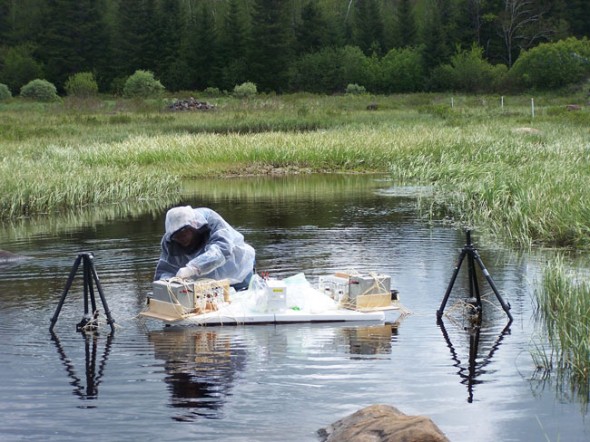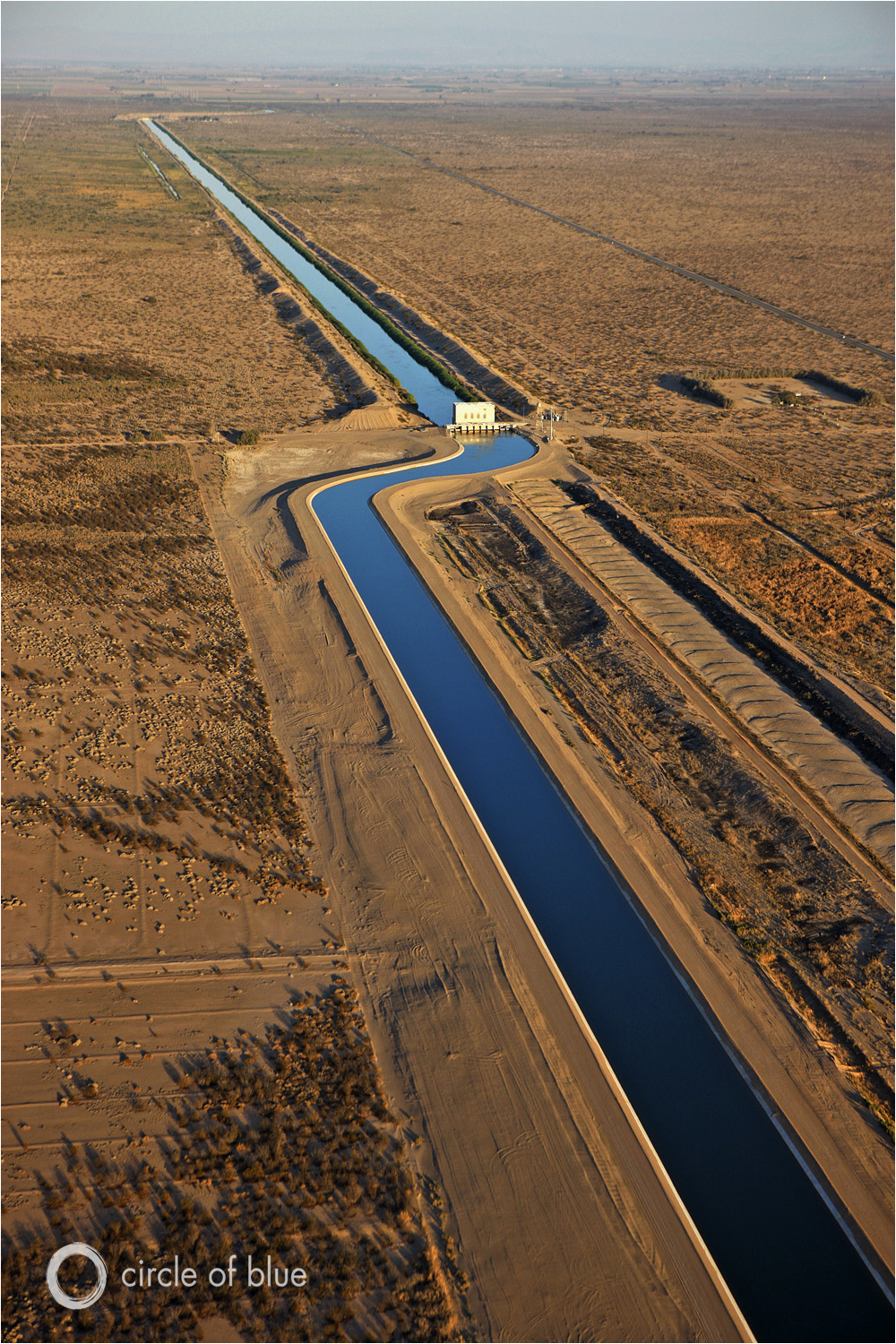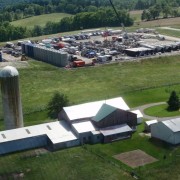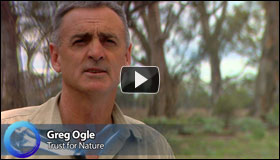Sequestration Takes a Big Cut from USGS Water Research Programs
Less money means fewer staff positions and fewer research projects at the nation’s universities.

By Brett Walton
Circle of Blue
Two U.S. Geological Survey research programs that focus on state and national water issues will see significant budget cuts in 2013 because of government austerity.
USGS administrators sent letters to the 54 water resources research institutes last week notifying them of the cuts.
The 104(b) program, which provides annual operating grants to the research institutes, will be reduced by $US 2 million this year, a 40 percent cut. Each institute will lose $US 37,000.
Even worse, the 104(g) program, which typically doles out roughly $US 1 million each year for water research of national importance and is open to researchers outside the state institutes, will get no money at all.
The dollar amounts may seem tiny, but the 104(b) program has typically been a reliable stream of base funding that allows small states to craft research projects that address specific needs in their communities. Many institutes get little or no state support.
–John Tracy, director
Idaho Water Resources Research Institute
“The state research institutes are one of the few programs to facilitate federal, state, and local water collaboration, including academia,” John Tracy, director of the Idaho Water Resources Research Institute, told Circle of Blue. “They have been the foundation for collaborative water resource management in the U.S. for the last 50 years.”
Circle of Blue spoke with representatives of a half dozen state water institutes, all of which are housed at public universities. They said the effects of the cuts will vary depending on an institute’s size and the availability of supplementary funding. Staff positions, research projects, and outreach programs will be eliminated.
If Congress extends the cuts another year or more, some institutes – those without state financial support – may have to close.
The Sequester’s Big Stick
Congress designed the sequester, which took effect March 1, to be a blunt instrument. All federal agencies, without discrimination, would be smacked. For its part, the USGS took a 5.2 percent cut due to sequestration – about $US 55 million.
Internally, however, those agencies have turned the cudgel into a scalpel, protecting core functions from disastrous cuts while concentrating the pain in certain areas.
The critical missions for the USGS are to protect life and property, Earl Greene, acting chief of the water resources research institute program, told Circle of Blue. That means keeping open the survey’s stream gauges and monitoring stations, which are essential for flood prediction.
Still, as many as 375 gauges will be cut, but Greene said the number would have been much higher if the USGS did not spread the burden to other programs such as the 104(b) and 104(g) grants.
Less Research, Staff
The 104(b) grant is one of those rare federal programs that gives states the freedom to design research projects around local needs – wetlands and coastal aquifers in Louisiana; energy development in Wyoming; agriculture and water quality in the Midwest.
Paul Ziemkiewicz, director of the West Virginia Water Research Institute, told Circle of Blue that the 104(b) funding also functions as a sort of farm system for the university’s researchers, helping them hone their skills on smaller projects so that they can compete for bigger grants down the road.
“We are able to develop a cadre of young researchers, mostly new professors,” said Ziemkiewicz, whose institute has done a lot of work recently on the effect of natural gas drilling in the Marcellus Shale formation on groundwater and surface water quality.
Congress acknowledged the importance of professional development when it authorized the water research institutes in 1964.
“The Nation must provide programs to strengthen research and associated graduate education,” states a 1984 update to the Water Resources Research Act, “because the pool of scientists, engineers, and technicians trained in fields related to water resources constitutes an invaluable natural resource which should be increased, fully utilized, and regularly replenished.”
–Ronald Turco, director
Indiana Water Resources Research Center
Kevin Wagner, associate director of the Texas Water Resources Institute, told Circle of Blue that his institute uses USGS funds to support graduate student research and to publish a magazine that highlights the institute’s research results.
Several directors told Circle of Blue that they receive no base funding from their respective states.
National Grants – Not This Year
The 104(g) program splits about $US 1 million each year between five or six projects that address national or interstate water problems. It will award no grants in 2013.
In recent years, the program funded research on aquifer storage and algal blooms, on droughts and floods in the eastern U.S., and on how climate change will alter the water cycle. Several projects investigated how saltwater is pushing into coastal groundwater and estuaries. Others looked at the water quality consequences from beetle-infested forests and from coal residues.
Sharon Megdal is the director of Arizona’s Water Resources Research Center. Megdal and her colleagues at the University of Arizona recently completed a national survey of groundwater policies in the 50 states. They used internal funds for the simple survey and had hoped to fund a more detailed study by winning a 104(g) grant.
“We thought we put together a very strong proposal,” Megdal told Circle of Blue.
While Megdal and other researchers will be looking elsewhere for money, the directors of the state water institutes worry about the long-term consequences if the sequester cuts turn permanent.
“If it’s only one year, we’ll recover,” John Tracy of Idaho’s water institute said. “But if it’s the start of the program’s erosion, that would be troubling. There are integrative approaches in these research projects and they can look at large-scale problems. A lot of these institutes wouldn’t survive without 104(b) funding.”
That is the case in Indiana, said Ronald Turco, director of the Indiana Water Resources Research Center.
“We do not receive ANY state support,” Turco wrote in an email to Circle of Blue, “so if the federal program is eliminated, the Indiana Water Resources Research Center will shut down.”
Brett writes about agriculture, energy, infrastructure, and the politics and economics of water in the United States. He also writes the Federal Water Tap, Circle of Blue’s weekly digest of U.S. government water news. He is the winner of two Society of Environmental Journalists reporting awards, one of the top honors in American environmental journalism: first place for explanatory reporting for a series on septic system pollution in the United States(2016) and third place for beat reporting in a small market (2014). He received the Sierra Club’s Distinguished Service Award in 2018. Brett lives in Seattle, where he hikes the mountains and bakes pies. Contact Brett Walton










Leave a Reply
Want to join the discussion?Feel free to contribute!